
Wynken, Blynken and Nod Wynken, Blynken and Nod one night Sailed off in a wooden shoeSailed on a river of crystal light, Into a sea of dew
Poems of Childhood, 1904 Worlds of Enchantment THE ART OF Maxfield Parrish DOVER PUBLICATIONS, INC. Mineola, New York
Copyright Copyright 2010 by Jeff Menges All rights reserved.
Bibliographical Note This Dover edition, first published in 2010, is an original compilation of illustrations from the following list of sources (arranged in chronological order):
Century Magazine (1896; December 1898; December 1901; 1902); The Mask and Wig Club (1898);
Scribners Magazine (April 1899; October 1899; August 1912);
The Golden Age by Kenneth Grahame (John Lane: The Bodley Head, London and New York, 1900);
Knickerbockers History of New York by Washington Irving (R. H. Russell, New York, 1900);
Success magazine (December 1901);
Dream Days by Kenneth Grahame (John Lane: The Bodley Head, London and New York, 1902); Italian Villas and Their Gardens by Edith Wharton (
Century Magazine, November 1904);
Ladies Home Journal (1904);
Poems of Childhood by Eugene Field (Charles Scribners Sons, New York, 1904);
The Arabian Nights: Their Best-Known Tales, edited by Kate Douglas Wiggin and Nora A.
Library of Congress Cataloging-in-Publication Data Parrish, Maxfield, 18701966.
Library of Congress Cataloging-in-Publication Data Parrish, Maxfield, 18701966.
Worlds of enchantment : the art of Maxfield Parrish / selected and edited by Jeff A. Menges. Dover ed. p. cm. eISBN-13: 978-0-486-13972-2 1. eISBN-13: 978-0-486-13972-2 1.
Parrish, Maxfield, 18701966Themes, motives. I. Menges, Jeff A. II. Title. III.
Title: Art of Maxfield Parrish. NC975.5.P37A4 2010 759.13dc22 2009046016 Manufactured in the United States by Courier Corporation 47306601 www.doverpublications.com  Barrow with Vegetables, The Knave of Hearts, 1925 I NTRODUCTION M axfield Parrish stands some distance apart from his contemporary illustrators of the twentieth century. His long and productive career covered nearly two-thirds of the last century, and it would be hard to find another artist who could be called more successful in the visual arts. Forty years of highly specialized commercial illustration work, followed by another thirty years of very personal introspective work, created a legacy, and a unique look, that continues to be extremely popular, as well as being the exclusive property of one artistMaxfield Parrish. He was born Frederick Maxfield Parrish in 1870 in Philadelphia, Pennsylvania. As a young boy he was encouraged by a father who was always interested in art.
Barrow with Vegetables, The Knave of Hearts, 1925 I NTRODUCTION M axfield Parrish stands some distance apart from his contemporary illustrators of the twentieth century. His long and productive career covered nearly two-thirds of the last century, and it would be hard to find another artist who could be called more successful in the visual arts. Forty years of highly specialized commercial illustration work, followed by another thirty years of very personal introspective work, created a legacy, and a unique look, that continues to be extremely popular, as well as being the exclusive property of one artistMaxfield Parrish. He was born Frederick Maxfield Parrish in 1870 in Philadelphia, Pennsylvania. As a young boy he was encouraged by a father who was always interested in art.
Both of Fredericks parents were supportive of his creative expression, and young Parrish was given many opportunities to exercise it. When he was in his mid-teens, the family went traveling through Europe; there, Frederick got a first-hand look at the works of the Renaissance masters, the Impressionists, and the Pre-Raphaelites.  Endpaper from 1904 After nearly two years in Europe, the Parrishes returned to the Philadelphia area. Soon Frederick enrolled at Haverford College (1888), where his interest in design and architecture led him to pursue that course of study, but art was where he excelled, and it eventually won him over. After Haverford, in 1892, Parrish enrolled at the Pennsylvania Academy of Fine Arts. A year later he crossed paths with another giant of early American illustration, Howard Pyle.
Endpaper from 1904 After nearly two years in Europe, the Parrishes returned to the Philadelphia area. Soon Frederick enrolled at Haverford College (1888), where his interest in design and architecture led him to pursue that course of study, but art was where he excelled, and it eventually won him over. After Haverford, in 1892, Parrish enrolled at the Pennsylvania Academy of Fine Arts. A year later he crossed paths with another giant of early American illustration, Howard Pyle.
Parrish was still looking for his path, but Pyle could recognize that he had all the tools he needed, and he told Parrish as much. Frederick audited a few of Pyles classes, and then went on to prove himself. In 1894 Parrish began to receive steady commercial work, and for the next four years he ran a small studio in downtown Philadelphia and further developed his style. He also adopted his middle nameMaxfield, a family namefor his identity in commercial work. Parrishs early style was strong and bold, accented with a dash of humor. It served him very well in the magazine market, where he became a regular contributor to Colliers, Scribners, and the Harpers family of publications, among the many popular periodicals of the time.
His characters were so playful and humorous that his artistry seemed a perfect fit for the appropriate childrens book, and, in 1897, Mother Goose in Proseboth Parrishs first illustrated book and the first book by Frank Baum (of Oz fame)found its way from Parrishs studio to the bookstores. In 1898 Parrish and his wife, Lydia, relocated. Illustration work was brisk, but Parrish desired a place in the country in order to work undisturbed, and he found it in Cornish, New Hampshire. Many artists and writers had settled in the area, establishing a colony of sorts. The locale agreed greatly with Parrish, and it was a constant source of inspiration for the rest of his life. Poems of Childhood by Eugene Field was the first book to feature Parrishs paintings in full color. Poems of Childhood by Eugene Field was the first book to feature Parrishs paintings in full color.
This success was followed by a lengthy magazine assignment in a very different area, featuring his illustrations for Italian Gardens and their Villas by Edith Wharton, appearing in Century magazine in 1904. These two assignments served as bookends in defining the type of work Parrish would devote himself to for the next twenty-five years: the first, the humorous characters for which he became so well known, and the second, architecture and landscape, passions that would occupy the last quarter-century of Parrishs life. In this new selection of images, we look at Parrishs commercial years, from early magazine pieces through the prints and advertising work that brought him fame, and up to his last color book work, what many consider to be his greatest collected work, The Knave of Hearts. Jeff A. Menges July 2009 L IST OF P LATES ) 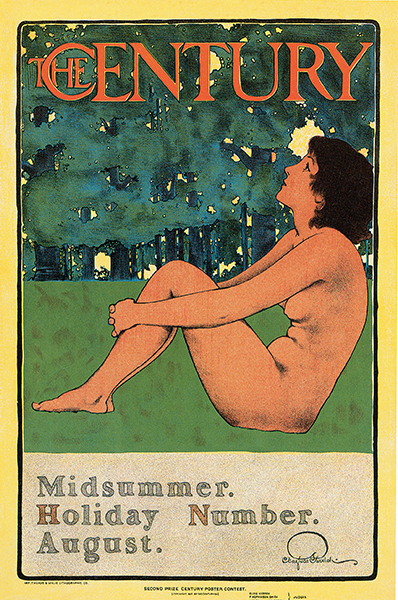 P LATE 1. Second Prize The Century Poster Contest, 1896
P LATE 1. Second Prize The Century Poster Contest, 1896 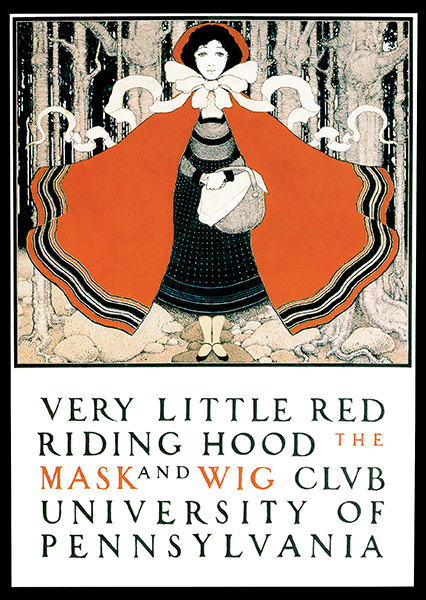 P LATE 2. Very Little Red Riding Hood The Mask and Wig Club, 1898
P LATE 2. Very Little Red Riding Hood The Mask and Wig Club, 1898 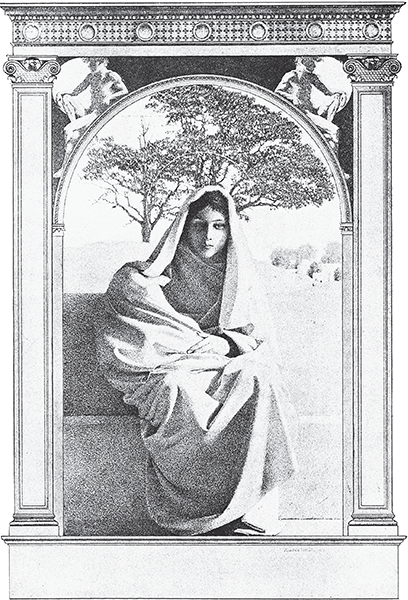 P LATE 3.
P LATE 3.
Christmas Eve Century Magazine, December 1898  P LATE 4. Cover Scribners Magazine, April 1899
P LATE 4. Cover Scribners Magazine, April 1899 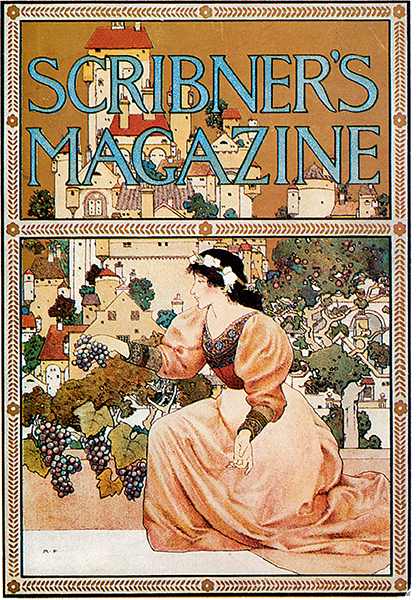 P LATE 5. Cover Scribners Magazine, October 1899
P LATE 5. Cover Scribners Magazine, October 1899 



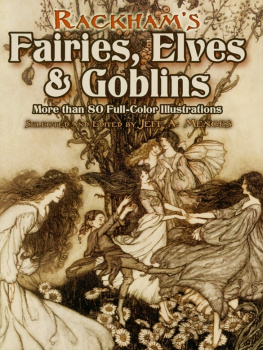
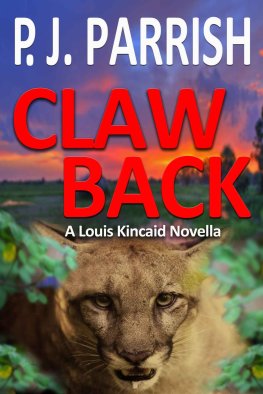


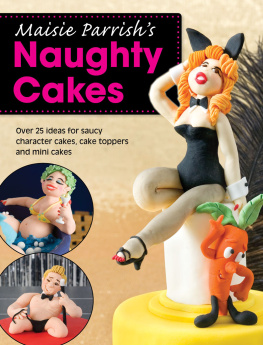
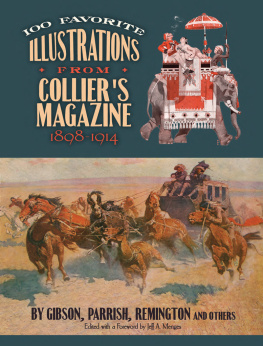


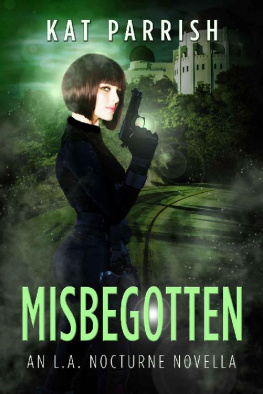

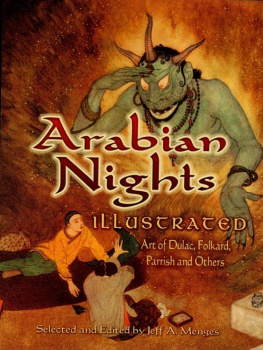

 Wynken, Blynken and Nod Wynken, Blynken and Nod one night Sailed off in a wooden shoeSailed on a river of crystal light, Into a sea of dew Poems of Childhood, 1904 Worlds of Enchantment THE ART OF Maxfield Parrish DOVER PUBLICATIONS, INC. Mineola, New York Copyright Copyright 2010 by Jeff Menges All rights reserved. Bibliographical Note This Dover edition, first published in 2010, is an original compilation of illustrations from the following list of sources (arranged in chronological order): Century Magazine (1896; December 1898; December 1901; 1902); The Mask and Wig Club (1898); Scribners Magazine (April 1899; October 1899; August 1912); The Golden Age by Kenneth Grahame (John Lane: The Bodley Head, London and New York, 1900); Knickerbockers History of New York by Washington Irving (R. H. Russell, New York, 1900); Success magazine (December 1901); Dream Days by Kenneth Grahame (John Lane: The Bodley Head, London and New York, 1902); Italian Villas and Their Gardens by Edith Wharton (Century Magazine, November 1904); Ladies Home Journal (1904); Poems of Childhood by Eugene Field (Charles Scribners Sons, New York, 1904); The Arabian Nights: Their Best-Known Tales, edited by Kate Douglas Wiggin and Nora A. Library of Congress Cataloging-in-Publication Data Parrish, Maxfield, 18701966. Library of Congress Cataloging-in-Publication Data Parrish, Maxfield, 18701966.
Wynken, Blynken and Nod Wynken, Blynken and Nod one night Sailed off in a wooden shoeSailed on a river of crystal light, Into a sea of dew Poems of Childhood, 1904 Worlds of Enchantment THE ART OF Maxfield Parrish DOVER PUBLICATIONS, INC. Mineola, New York Copyright Copyright 2010 by Jeff Menges All rights reserved. Bibliographical Note This Dover edition, first published in 2010, is an original compilation of illustrations from the following list of sources (arranged in chronological order): Century Magazine (1896; December 1898; December 1901; 1902); The Mask and Wig Club (1898); Scribners Magazine (April 1899; October 1899; August 1912); The Golden Age by Kenneth Grahame (John Lane: The Bodley Head, London and New York, 1900); Knickerbockers History of New York by Washington Irving (R. H. Russell, New York, 1900); Success magazine (December 1901); Dream Days by Kenneth Grahame (John Lane: The Bodley Head, London and New York, 1902); Italian Villas and Their Gardens by Edith Wharton (Century Magazine, November 1904); Ladies Home Journal (1904); Poems of Childhood by Eugene Field (Charles Scribners Sons, New York, 1904); The Arabian Nights: Their Best-Known Tales, edited by Kate Douglas Wiggin and Nora A. Library of Congress Cataloging-in-Publication Data Parrish, Maxfield, 18701966. Library of Congress Cataloging-in-Publication Data Parrish, Maxfield, 18701966.  Barrow with Vegetables, The Knave of Hearts, 1925 I NTRODUCTION M axfield Parrish stands some distance apart from his contemporary illustrators of the twentieth century. His long and productive career covered nearly two-thirds of the last century, and it would be hard to find another artist who could be called more successful in the visual arts. Forty years of highly specialized commercial illustration work, followed by another thirty years of very personal introspective work, created a legacy, and a unique look, that continues to be extremely popular, as well as being the exclusive property of one artistMaxfield Parrish. He was born Frederick Maxfield Parrish in 1870 in Philadelphia, Pennsylvania. As a young boy he was encouraged by a father who was always interested in art.
Barrow with Vegetables, The Knave of Hearts, 1925 I NTRODUCTION M axfield Parrish stands some distance apart from his contemporary illustrators of the twentieth century. His long and productive career covered nearly two-thirds of the last century, and it would be hard to find another artist who could be called more successful in the visual arts. Forty years of highly specialized commercial illustration work, followed by another thirty years of very personal introspective work, created a legacy, and a unique look, that continues to be extremely popular, as well as being the exclusive property of one artistMaxfield Parrish. He was born Frederick Maxfield Parrish in 1870 in Philadelphia, Pennsylvania. As a young boy he was encouraged by a father who was always interested in art. Endpaper from 1904 After nearly two years in Europe, the Parrishes returned to the Philadelphia area. Soon Frederick enrolled at Haverford College (1888), where his interest in design and architecture led him to pursue that course of study, but art was where he excelled, and it eventually won him over. After Haverford, in 1892, Parrish enrolled at the Pennsylvania Academy of Fine Arts. A year later he crossed paths with another giant of early American illustration, Howard Pyle.
Endpaper from 1904 After nearly two years in Europe, the Parrishes returned to the Philadelphia area. Soon Frederick enrolled at Haverford College (1888), where his interest in design and architecture led him to pursue that course of study, but art was where he excelled, and it eventually won him over. After Haverford, in 1892, Parrish enrolled at the Pennsylvania Academy of Fine Arts. A year later he crossed paths with another giant of early American illustration, Howard Pyle. P LATE 1. Second Prize The Century Poster Contest, 1896
P LATE 1. Second Prize The Century Poster Contest, 1896  P LATE 2. Very Little Red Riding Hood The Mask and Wig Club, 1898
P LATE 2. Very Little Red Riding Hood The Mask and Wig Club, 1898  P LATE 3.
P LATE 3. P LATE 4. Cover Scribners Magazine, April 1899
P LATE 4. Cover Scribners Magazine, April 1899  P LATE 5. Cover Scribners Magazine, October 1899
P LATE 5. Cover Scribners Magazine, October 1899 